The Guide / Barcelona
Fashion
Best feet forward
There’s a reason why this city’s residents always have a spring in their step. We survey its finest shoe shops.
In the realm of shoemaking, Spain stands tall. The country’s deep-rooted heritage in craftsmanship and its history of groundbreaking designers have led brands such as Camper, Castañer and Manolo Blahnik to international acclaim. One of the country’s – and the world’s – most iconic designs is the espadrille, known as the alpargata in Spanish or the espardenya in Catalan. Part of Catalan traditional dress, the shoe is worn for traditions such as castellers and the dance of sardanes. Barcelona’s oldest continuously operating espadrille shop is on Carrer Avinyó, the same street that inspired one of Picasso’s most famous paintings. “The espadrille is a very authentic tradition that we have maintained – it’s part of our culture,” says Asilde Sánchez, owner of shop and workshop La Manual Alpargatera. “We are very proud of it and I think that’s palpable. We love what we do.”
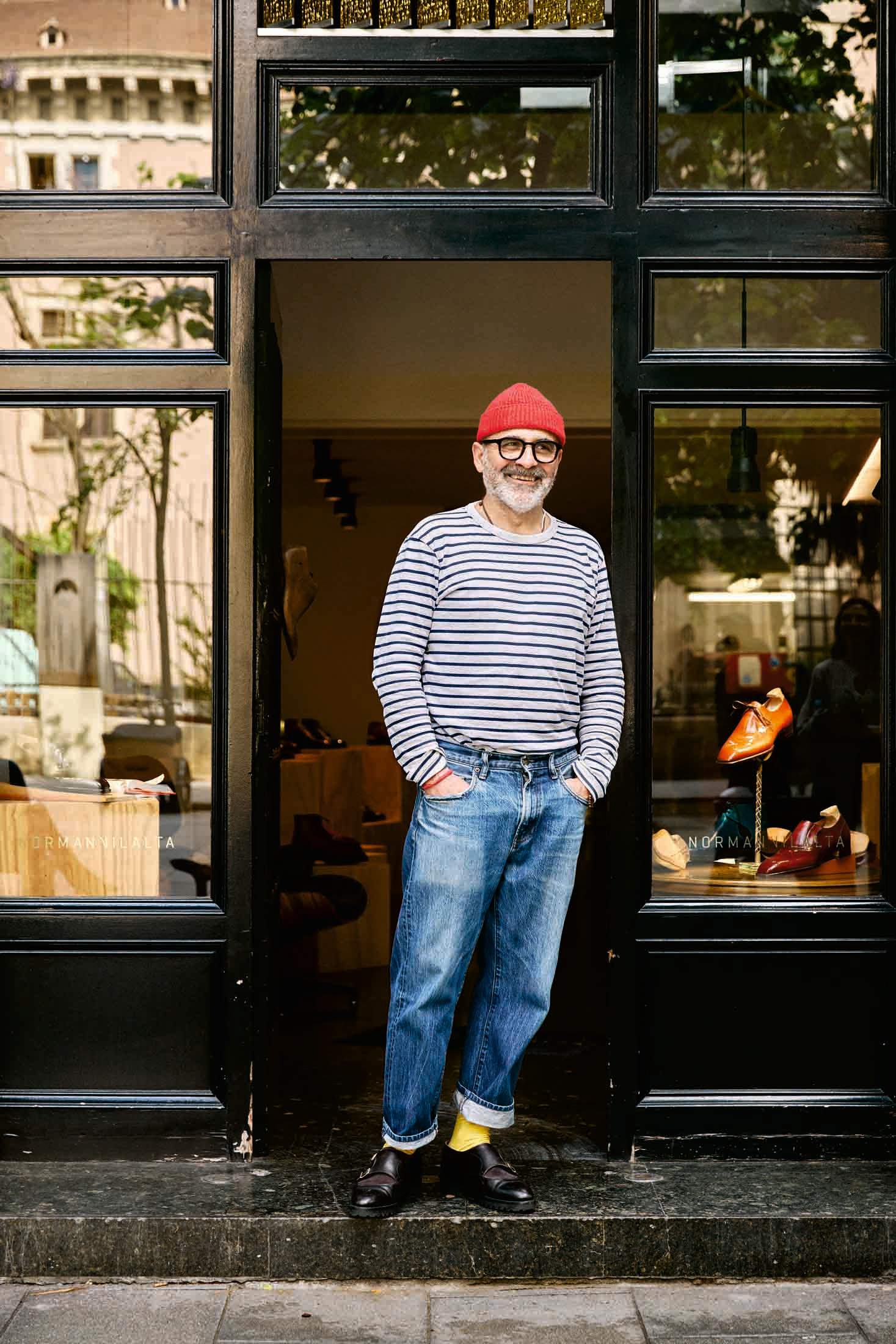
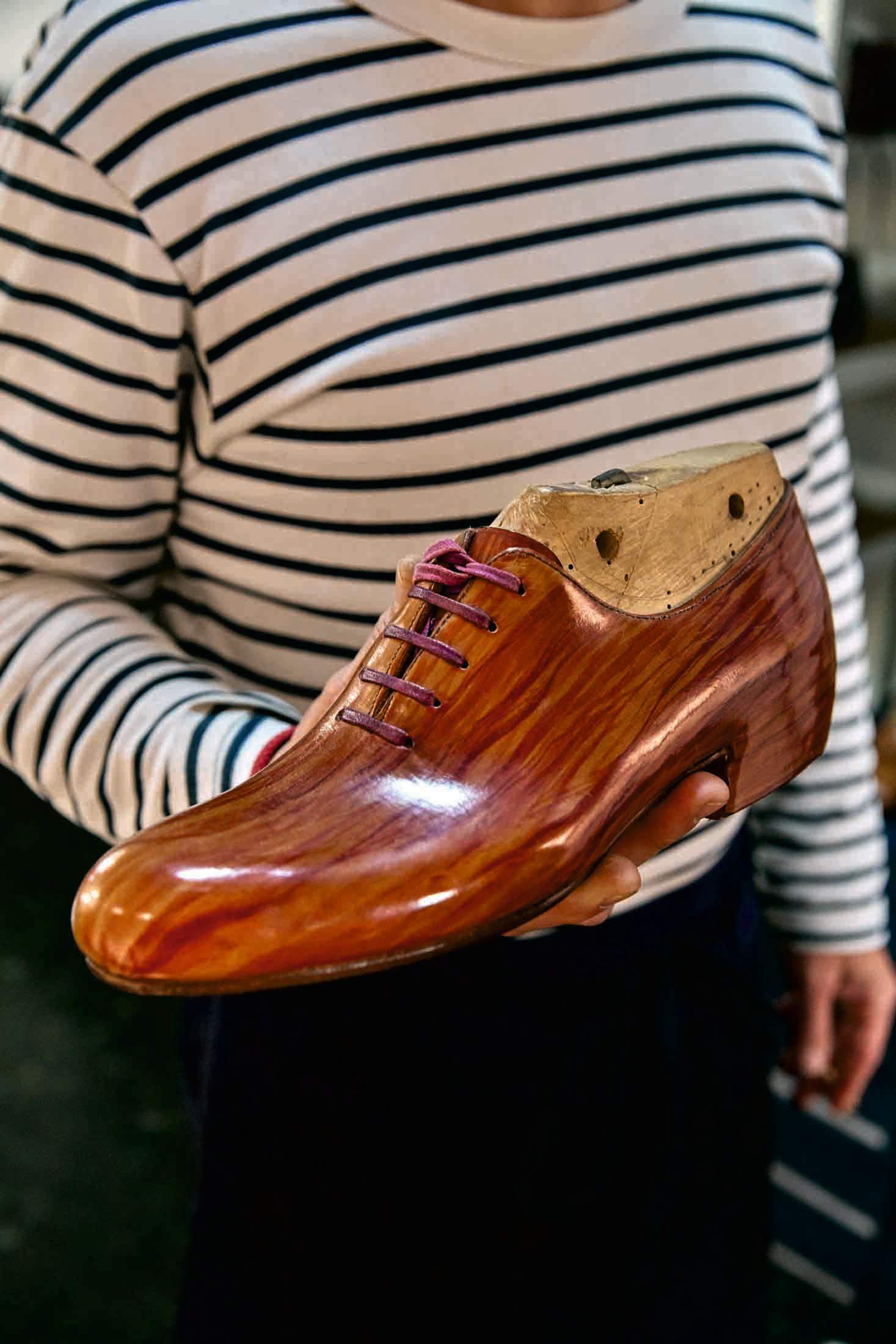

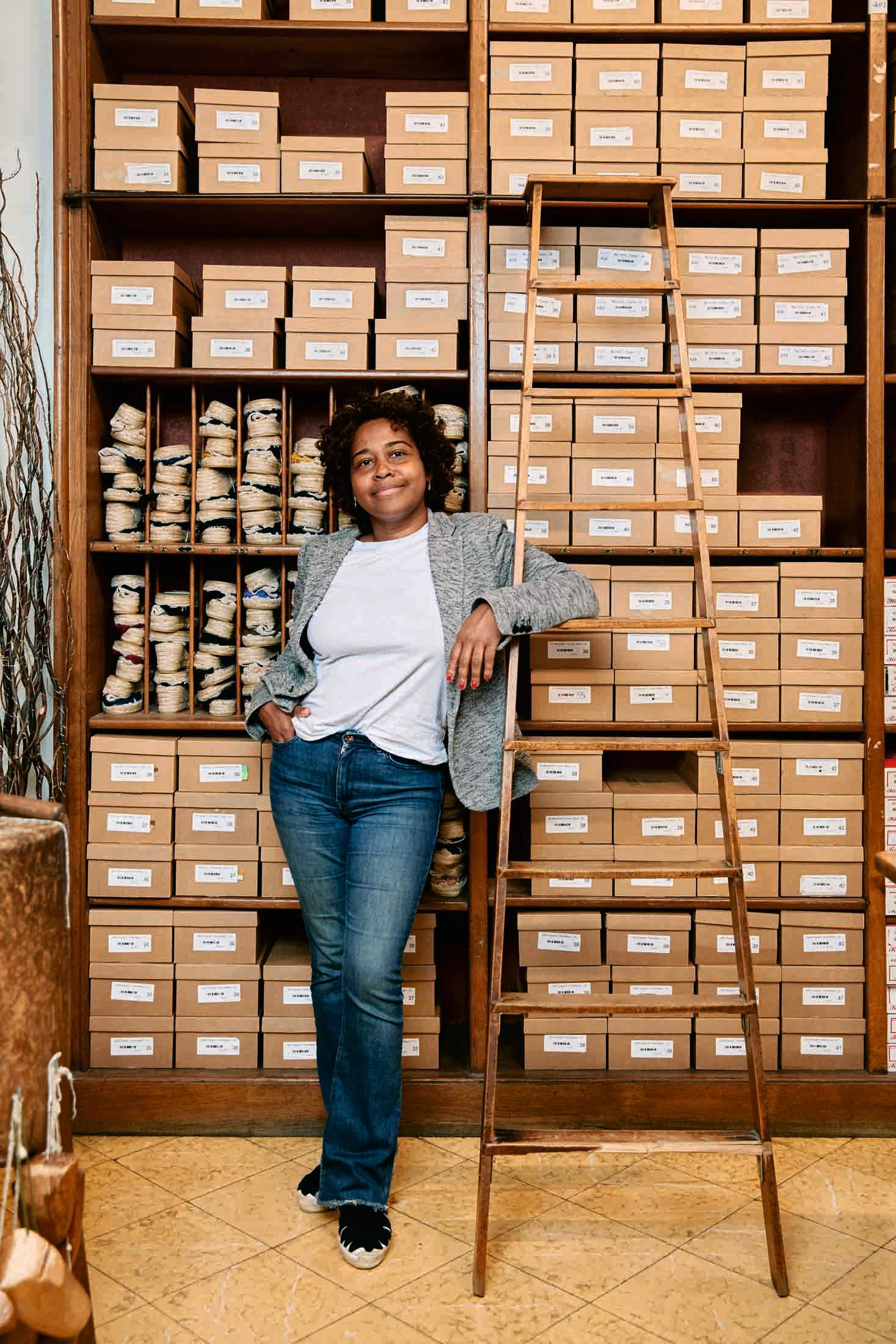
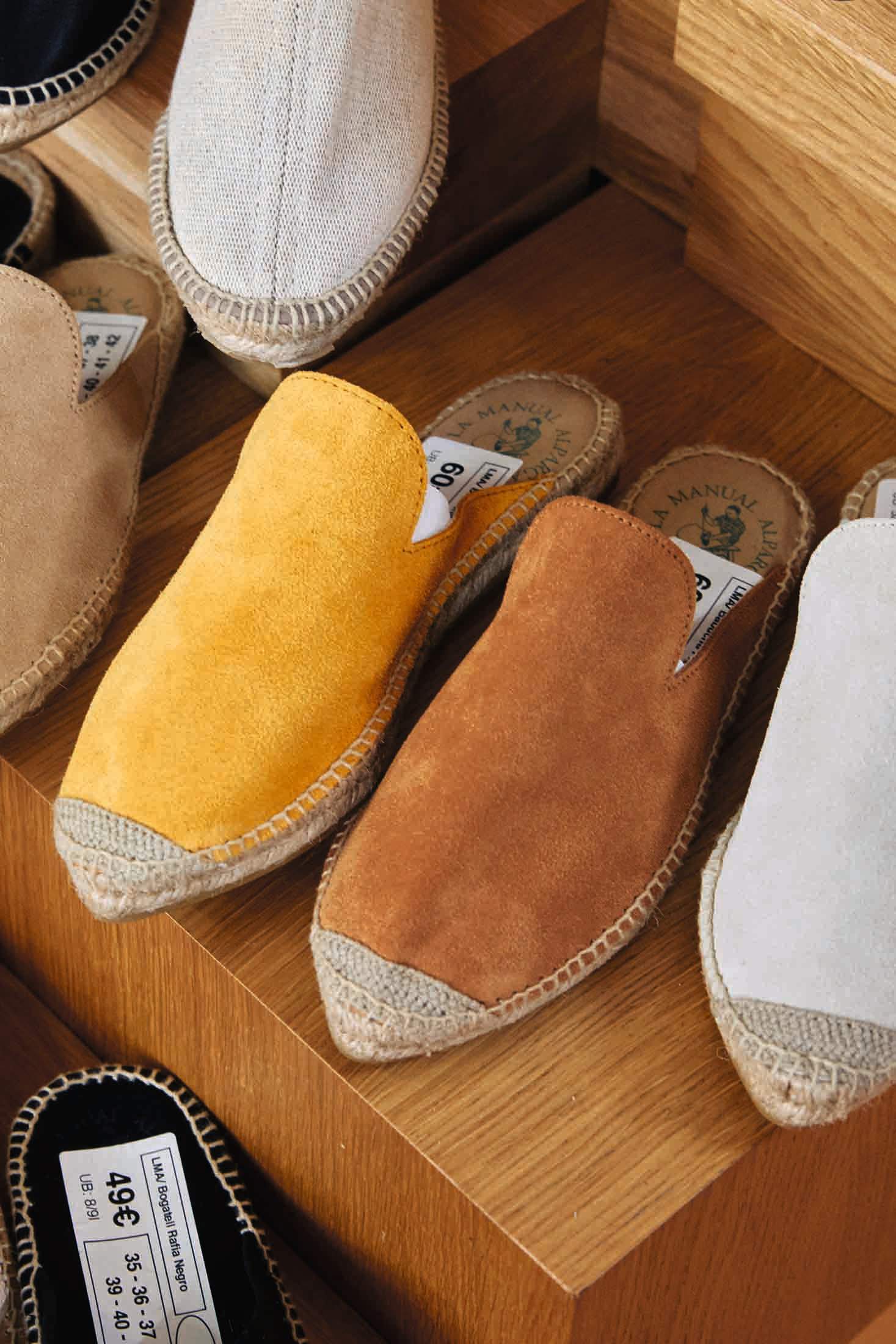
Spain’s passion for footwear has also attracted foreign designers to Barcelona. Argentinian Norman Vilalta has run his boutique in Eixample for the past 20 years, adding modern touches to classic menswear styles. After quitting his job as a lawyer to do a shoemaking apprenticeship in Florence at the age of 31, he moved to Spain to experiment with new design ideas. While he is passionate about the technical side of his work, Vilalta believes that craftsmanship should fuel innovation. “The best thing that we can do for the profession today is not to do what we did before but with greater technical perfection,” says Vilalta. “It’s to take risks and change things.”
Norman Vilalta
5 Carrer d’Enric Granados, L’Eixample, 08007
+34 933 23 40 14
shop.normanvilalta.com
La Manual Alpargatera
7 Carrer d’Avinyó, Ciutat Vella, 08002
+34 933 01 01 72
lamanual.com
Castañer
268 Carrer València, L’Eixample, 08007
+34 932 45 30 01
castaner.com
Adriana Dumon
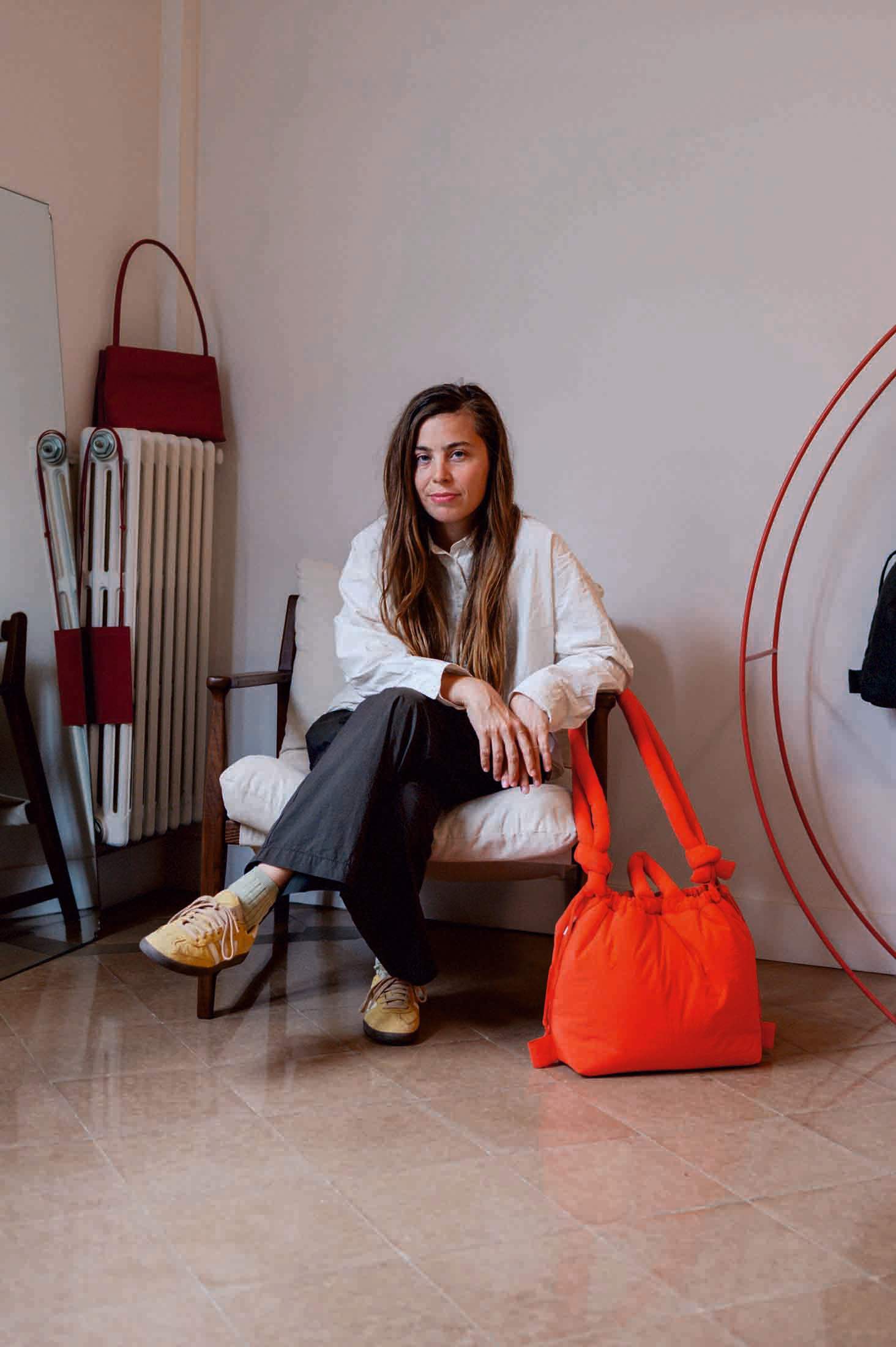
The Ölend co-founder tells us how her bag brand grew organically to become a global hit.
Barcelona’s reputation as a tastemaker for the global design scene stretches back centuries. But recent years have also seen a boom in homegrown fashion talent gaining international acclaim, with bag brand Ölend among the biggest success stories. Co-founders Adriana Dumon and Fran Río started the company in 2012 and today produce a range of totes, backpacks and shoulder bags that marry Nordic minimalism with bold Mediterranean flair. Here, Dumon explains the importance of creative collaboration to the brand.
What’s the story behind Ölend?
Fran and I met when we were studying film but times were hard for the industry due to Spain’s economic crisis. So we started thinking about what else we could do. In 2012, Fran found this backpack-making workshop and, as soon as we graduated, we posted pictures of our creations online. Loads of friends asked if we could make one for them, so we decided to give it a go. I never thought it could become a brand. Everything has grown very naturally.
Has collaborating with other Catalan creatives always been important to Ölend?
Yes. We’ve been working with so many amazing creative friends from the beginning and many have since become very successful in their own right. I was living with the photographer Carlota Guerrero when we launched the brand and she did our lookbook. We also shared our first studio with design practice Querida, which created our logo. We launched at a special moment, creatively speaking. Even though the economy wasn’t good, everyone was looking for their own path out of the darkness. We knew that we needed to work together to create a better future. Where previous generations were more competitive, we were always more collaborative.
Is Spain your biggest market?
Spain accounts for 5 per cent of our sales. We’re very global: our biggest market is the US, followed by Japan. For me, that’s a dream because it’s my favourite country. I’ve always found a lot of inspiration there in terms of the aesthetic of Ölend. Japan has the best material, the best fabrics.
What’s next for Ölend?
After the success of the scarf we released last year, we’re planning more clothing and accessories. We’re creating a prototype trench coat. When shooting new bag designs, our models often wear the coats. So many people asked where they could buy them that we decided to produce them. You have to listen to your clients.
olend.net
Cortana
Fashion gets the gallery treatment at this boutique, where garments are displayed with the reverence of a Picasso.
Stepping into Cortana’s boutique just off Barcelona’s elegant Passeig de Gràcia is like entering an urban sanctuary. Here, ivory silk dresses and soft linen trousers hang from the ceiling at different heights as if floating above the ground. “The idea is that customers enter an oasis where they can forget about what’s going on outside,” says founder Rosa Esteva. “The set-up makes it feel as though the clothes are falling from the sky and that you are in a dream where you can transform yourself and where you have plenty of space and time.”
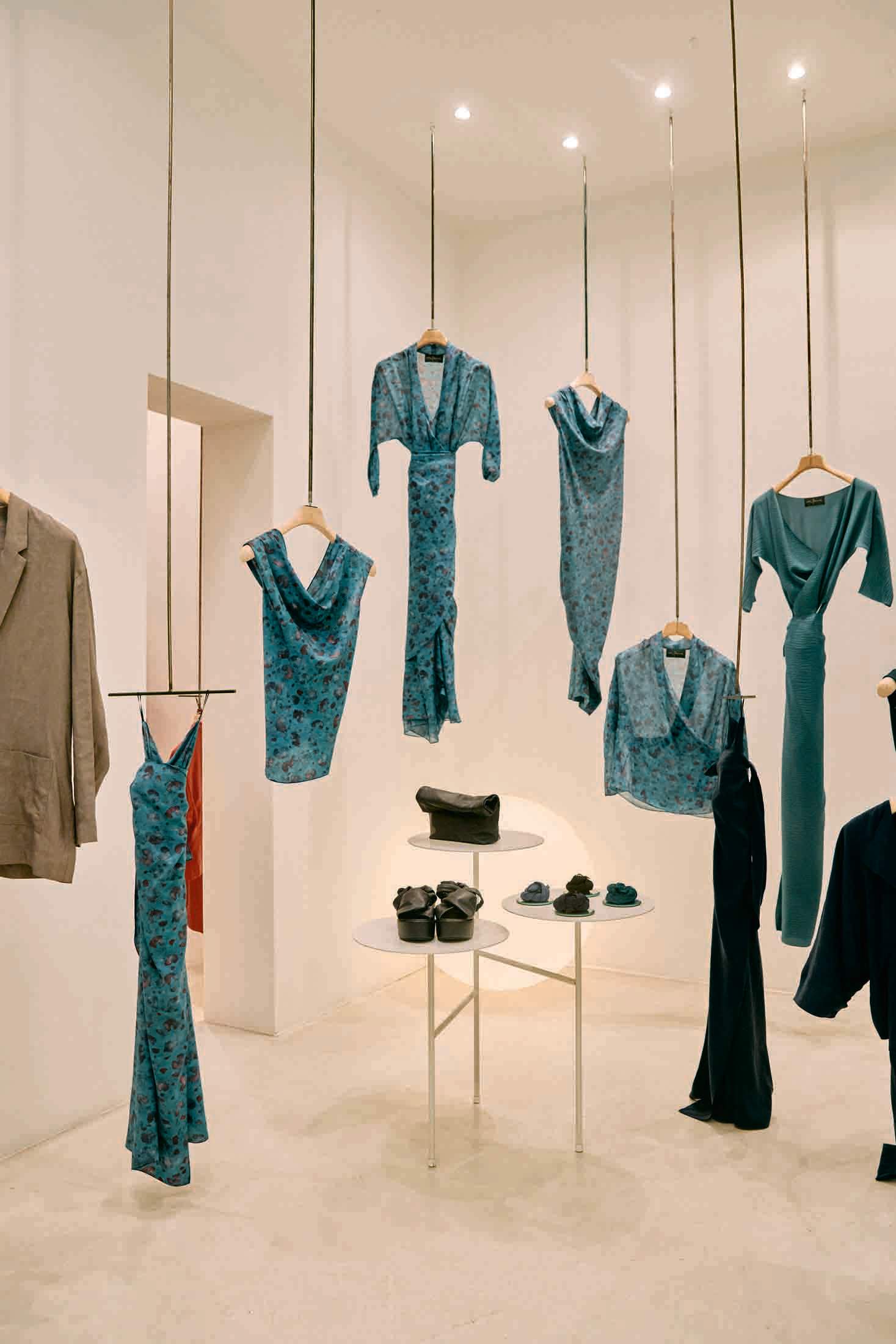
Since starting in 2001 with a small shop in the El Born neighbourhood, Cortana has established itself as a prominent name in luxury fashion, known for sophisticated and timeless designs that reflect Esteva’s passion for art, nature and craftsmanship. The boutiques in Palma de Mallorca, Barcelona and Madrid are a testament to the brand’s thoughtful aesthetic philosophy, exuding a serene and inviting atmosphere that highlights the beauty of clothing like works of art. The brand’s pieces are crafted in natural fabrics by artisans in Mallorca, where Esteva grew up and still lives, and finished with a silk lining. “We are very concerned about the emotion that the person will feel when they are dressed in Cortana,” says Esteva. “That’s our aim: to make people feel good.”
cortana.es
Santa Eulalia
Service is king at this historic multi-brand department store with a secluded rooftop terrace, bistro and champagne bar.
Four generations of retail acumen have laid a solid foundation of trust and loyalty at this heritage department store. The most visible vestige of this hangs in neat rows of shirt patterns and measurements inside the archive display of the in-house tailor. The original store opened in Pla de la Boquería as a luxury textile shop in 1843 and then relocated to a bigger three-storey space on Passeig de Gracia in 1944.
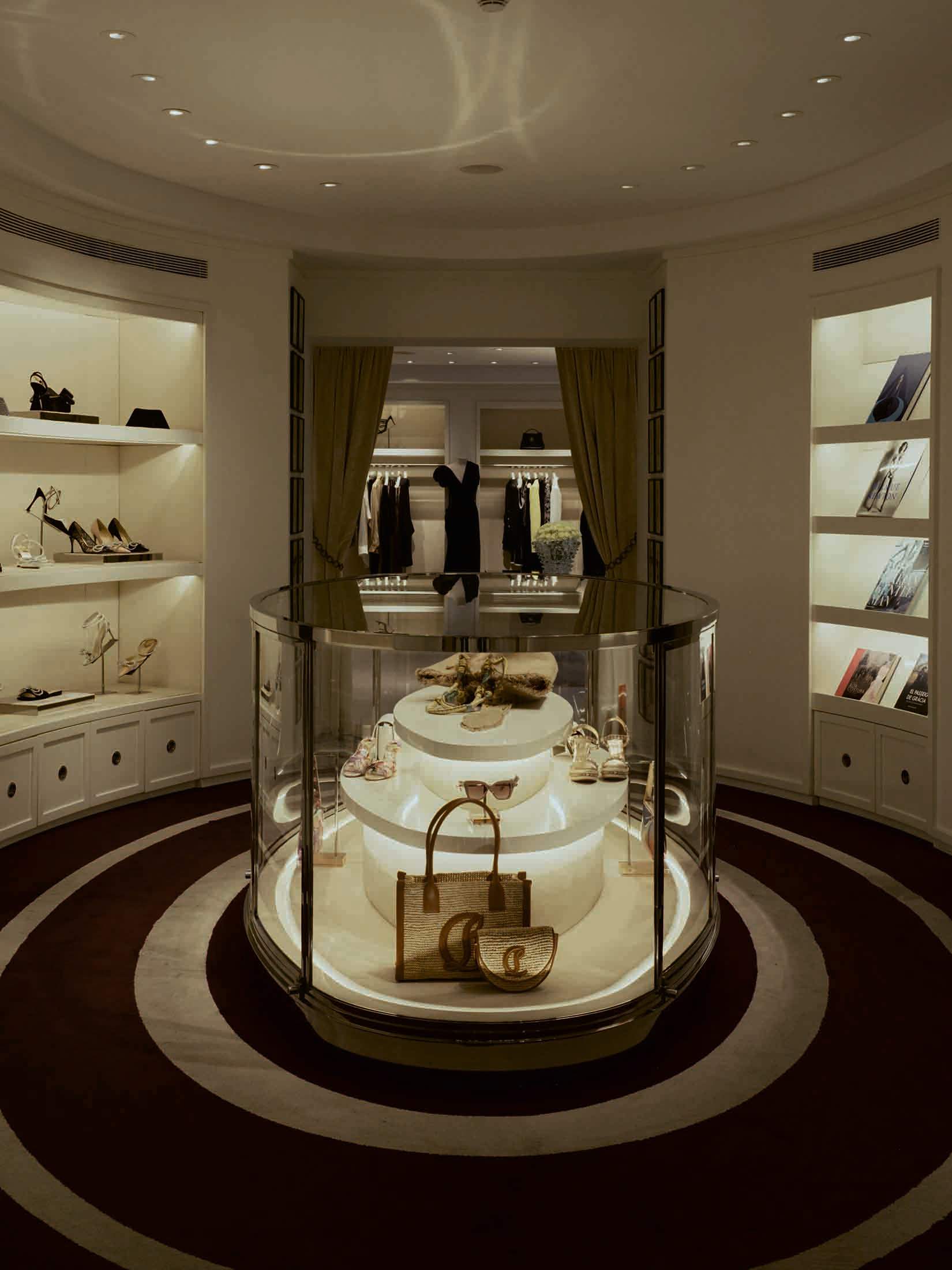
When owner Luis Sans decided to embark on an ambitious revamp in 2011, he flew to New York to personally recruit renowned luxury shop designer William Sofield. The interior architect gave Santa Eulalia a contemporary edge by blending original fittings such as the grand wooden staircase and antique artworks with custom metallic cabinets, tables and hangers that playfully integrate the shop’s X logo.
The shop’s well-curated offering of accessories range from bags to jewellery as well as men’s and women’s formalwear and trendier garments from the likes of Moncler and Brioni. There is even a popular collection of fragrances inspired by Barcelona and the Mediterranean. Santa Eulalia is one of the few original retail stalwarts left on the city’s increasingly international high street. “We ensure that locals and visitors are made to feel welcome,” says Sans.
santaeulalia.com
Bassal
Nordic minimalism meets Catalan modernism at this slick shop.
Clothing shop Bassal is housed on the ground floor of a grand building designed in the early 1900s by Josep Puig i Cadafalch. “He was one of Catalonia’s most famous architects, a contemporary of Gaudí,” says Pol Bassal, the shop’s founder. The building’s ornate façade contrasts with the shop’s white-washed interiors, designed by Bassal. The shop is a drop of refined Scandinavian minimalism in the heart of Eixample, a well-heeled neighbourhood defined by its Catalan art nouveau architecture. “We stock various brands from the Nordics, such as Mfpen from Copenhagen and Hope from Sweden,” says Bassal. There are also plenty of homegrown brands on the racks, with womenswear from Galicia’s Cordera, knitwear from Catalan brand Bielo and footwear from Barcelona-based About Arianne. “We try to keep adding brands to our range so there’s always something new to discover in the shop,” says Bassal.
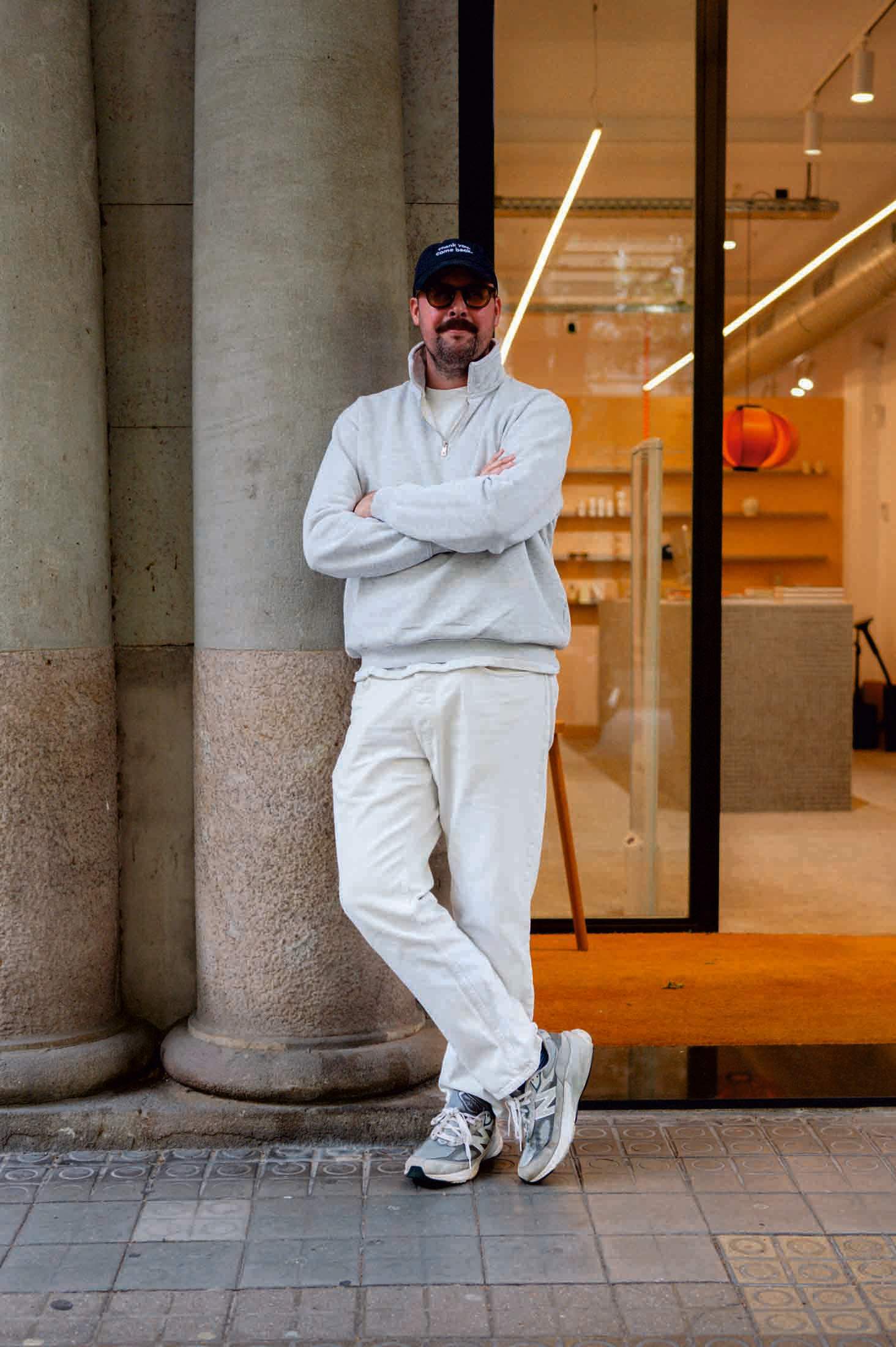
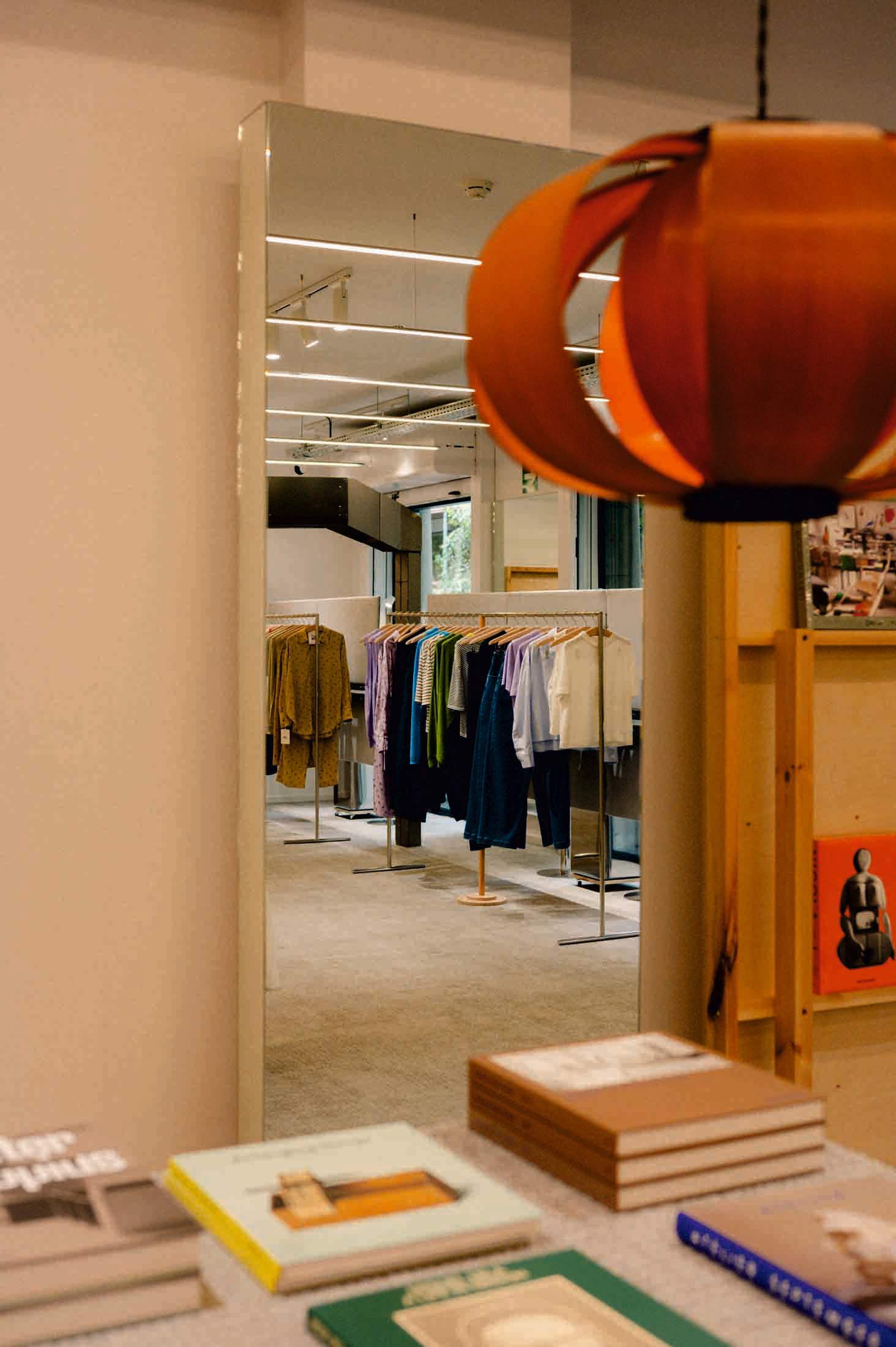

There is also a range of swimwear designed by Bassal – a couple of one-pieces for women alongside a series of swimming trunks in colourfully patterned fabrics. “I noticed a lack of quality swimwear for men with premium European-sourced materials and thought that it was time to do something about it,” he says. “Every pattern used has been designed by me and printed in Barcelona using only the finest Italian fabric.”
bassal.store
27 87
With its modern fragrances and canny approach to branding, 27 87 is a perfume brand with its fingers on the pulse.
Growing up in a family of bakers, Romy Kowalewski’s sense of smell was refined from a young age. “My father made me try his new recipes and guess which ingredients he had changed,” says the Berlin-born entrepreneur. “That’s how you train your taste but also your nose.” It’s perhaps unsurprising, then, that she ended up launching a perfumery. “In the end, it’s exactly the same thing, because taste and smell are connected.”
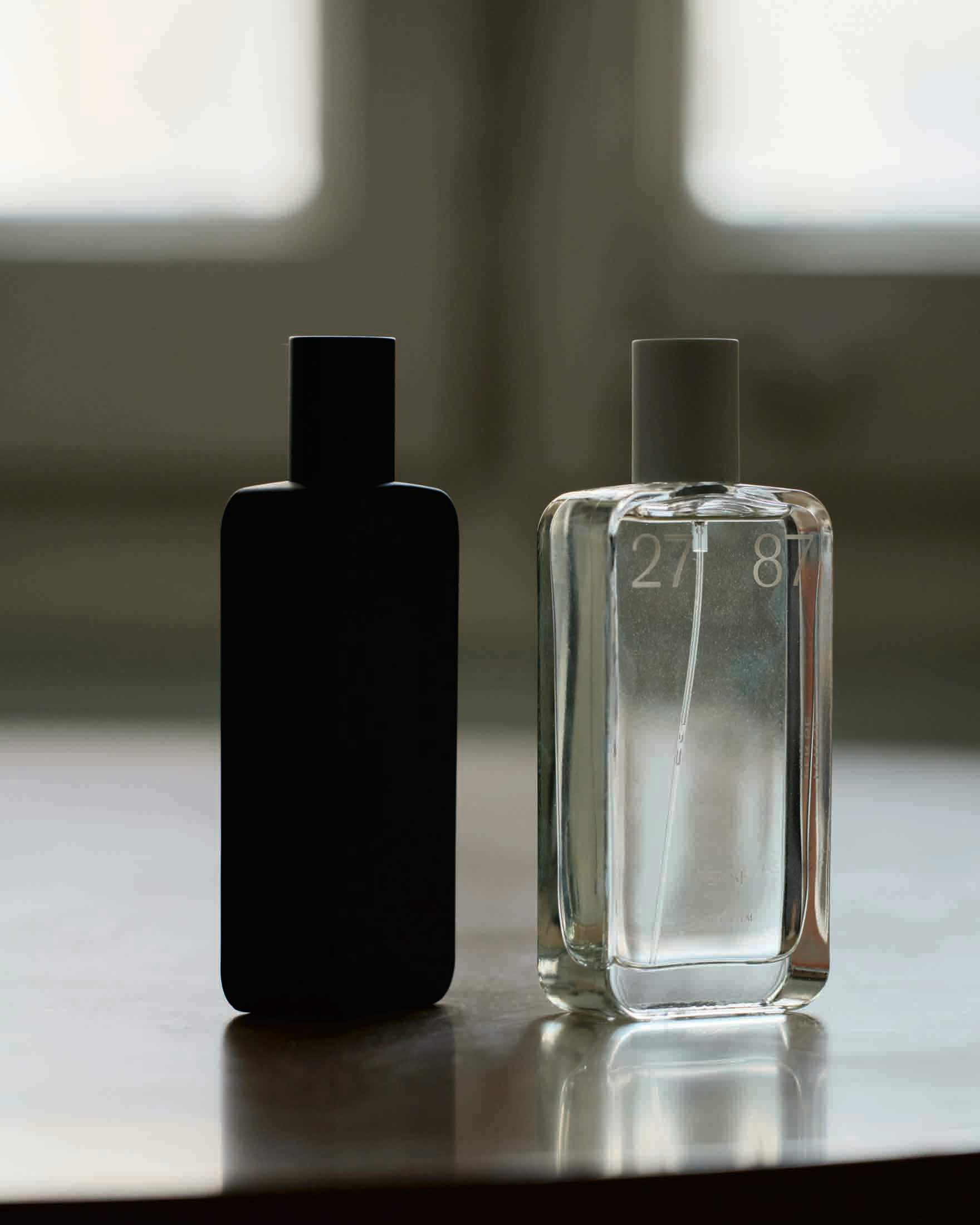
Kowalewski moved to Barcelona to study business administration and never left. In 2016 she founded 27 87, a modern brand aimed at emphasising the individuality of its wearers. Every fragrance is made in Barcelona with meticulous attention to detail. The Sónar fragrance, for example, evokes music festivals by combining beer accord with notes of wood, bergamot and vanilla. Minimalist packaging provides a blank slate for personal interpretation (all perfumes are gender neutral) and fragrances come in 27ml and 87ml bottles, rather than the traditional sizes. “In Western music there are 12 notes and in perfumery we have more than 3,500 ingredients, but traditional perfumery is stuck in the past,” says Kowalewski. “There are so many possibilities.” The brand’s first bricks-and-mortar outpost will be typically unconventional. Rather than a traditional shop, it will be a showroom where customers can experience the perfume and look behind the scenes at the production process.
2787perfumes.com
Après Ski
From artisanal jewellery to limited-run apparel, this quirky atelier is a must-visit if you want to shake up your wardrobe.
Tucked away down a narrow side street in the El Born neighbourhood is Après Ski’s small shop-cum-atelier. Founder Lucía Vergara’s jewellery designs are hand-produced by artisans in Turkey and Girona before being assembled by her team at the store in Barcelona. The range mixes chunky acetate earrings and delicate necklaces with animal-shaped pendants and simple gold-plated bangles. Other objects are designed in collaboration with local artists and makers too, including ceramics by Beatriz Garrigó, a lamp created with artist Miquel Matas Ferrer and a rug made by Catalan wool-makers La Fàbrica de Llanes d’Arsèguel.
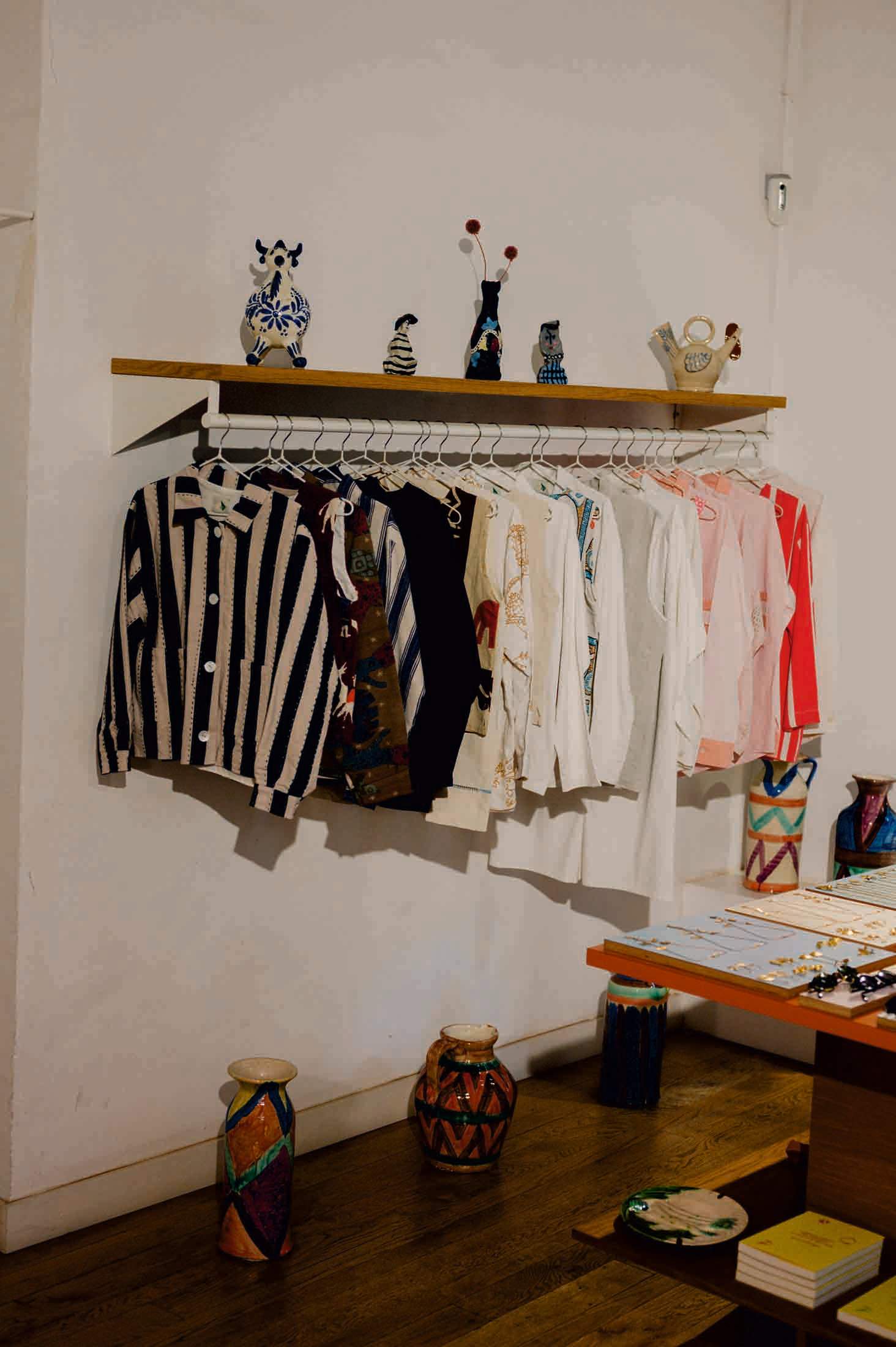
A few years ago, Vergara also added apparel to the brand’s offering. She had started out sewing outfits for models to wear in her jewellery campaigns and shoppers were keen to know whether they could buy the clothes – prompting Vergara to add an array of shirts, jackets and hats to Après Ski’s permanent collection. But every piece is something of a limited edition, as clothing is made only in small quantities, using mostly vintage fabrics sewn by hand in Barcelona.
“I spend a lot of time searching for materials,” says Vergara. “I buy them in all kinds of places: flea markets, antique dealers and auction houses. I also travel often to find fabrics from different cultures.”
apresski.es
Gema Galdón
This workshop’s instinctual approach to millinery has seen its designs added to New York’s Metropolitan Museum of Art.
After years of working as a teacher, Gema Galdón traded the classroom for a workshop to focus wholeheartedly on her passion for hat-making. Despite being entirely self-taught, her designs quickly caught the eye of passers-by seeking stylish sun hats or elegant wedding fascinators. “When I first opened the business, I didn’t think that I would keep it open for more than a month,” says Galdón. “But the hats practically sold themselves from day one.”
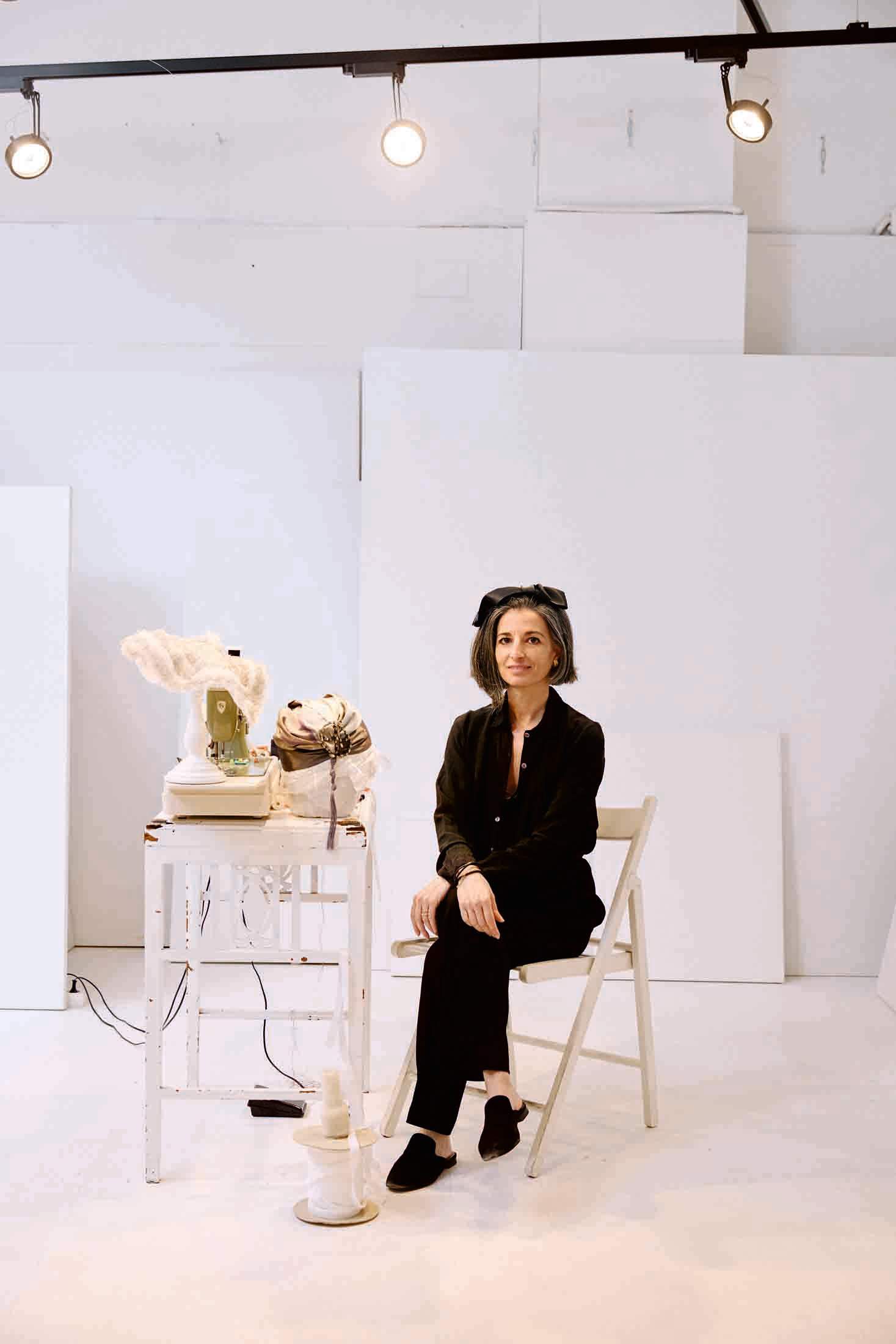
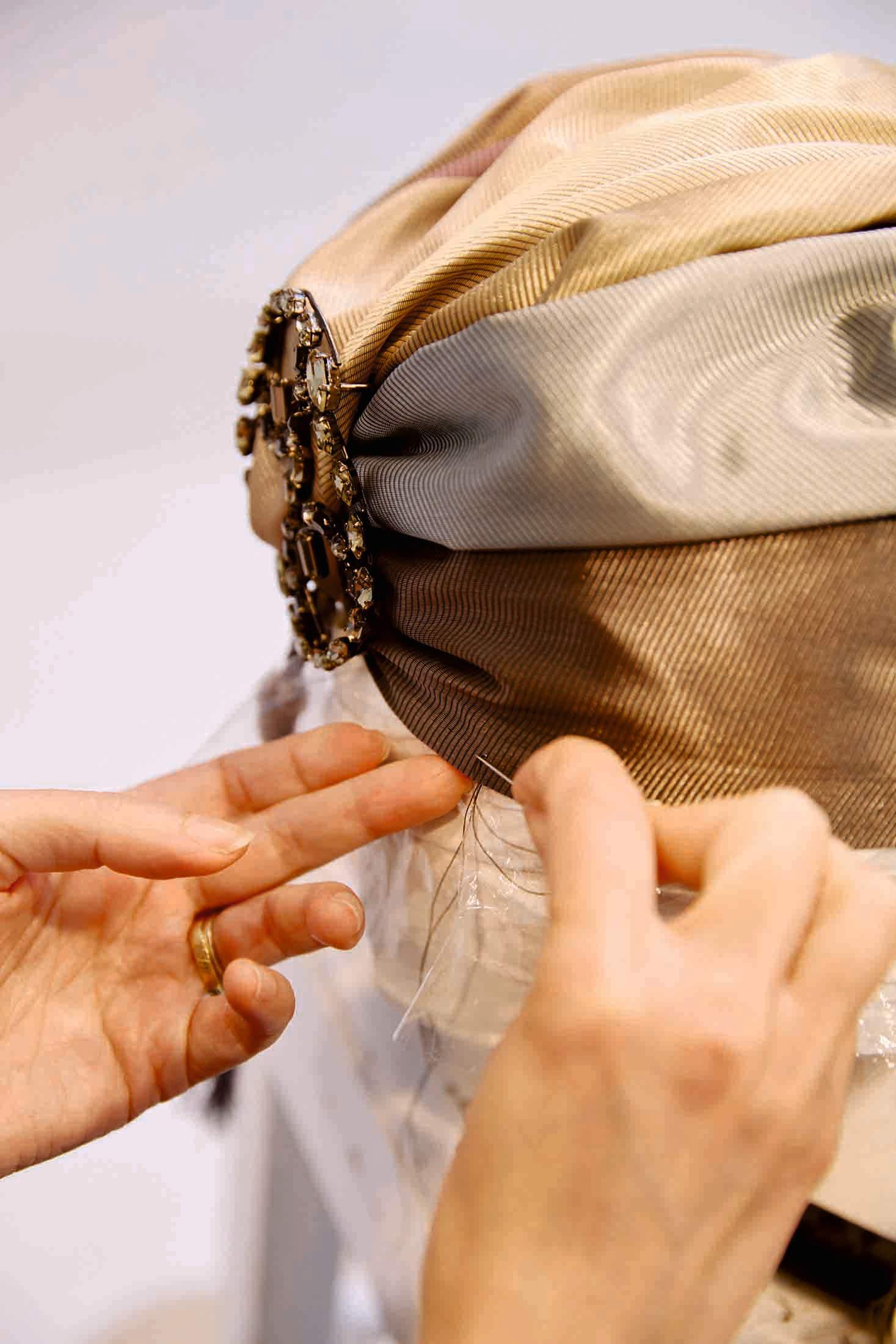
Galdón pursued formal training with renowned hat designer Biliana Borissova and her distinctive approach to millinery has since seen her design hats for catwalks, film and television. A pivotal moment came in 2018 when she struck up a friendship with the former Vogue editor André Leon Talley at a fashion show.
He passed away before he could don the black leather pillbox hat that she had crafted for him but the piece found its way to an auction at Christie’s, eventually landing in the collection of the Metropolitan Museum of Art in New York. “It was surreal,” says Galdón.
Her designs are characterised by her instinctive approach. “As soon as I see the material, I know in which direction to go.”
gemagaldon.com


